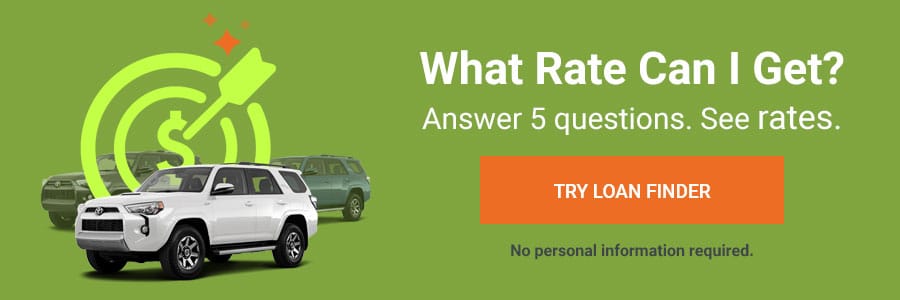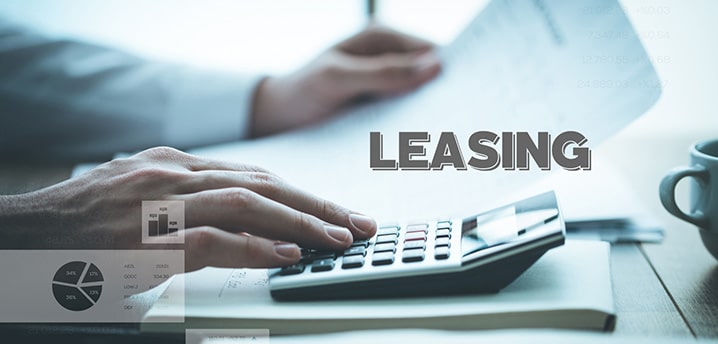Refinancing your car lease into a car loan is possible, but you should crunch the numbers first.
If you have a car lease, you know how expensive it can be. The average monthly payment on the most popular leased vehicle — the Ford F150 — was $516 in the second quarter of 2022, according to an Experian report.
If you’re having trouble making your car lease payments, the unfortunate truth is that it’s not as simple to refinance a car lease. Once you’ve signed the contract, you generally can’t renegotiate the lease terms.
You’re not totally out of options though — taking out a car refinance loan and using it to buy out your lease can be a great de-facto car lease refinance option. It sounds confusing, but we’ll break it down for you in easy-to-understand steps.
What Is a Car Lease Refinance?
When you refinance anything, you typically keep the same asset (a car, in this case) and replace your current financing with new, better financing. That’s what happens when you refinance a car loan: you keep the same car, but you replace your existing loan with a new loan.
Unfortunately, car leases don’t quite work the same way. You can’t keep the same car and replace your current auto lease with a new lease.
Generally, you have four options for getting out of a car lease:
- Lease a new vehicle: Return your current car to the dealership and lease a new one.
- Extend your lease: Some auto dealerships will allow you to extend your lease term.
- Return the car and walk away: Return your current car to the dealership and leave without buying or leasing any other cars.
- Car lease buyout: Purchase the car you’ve been leasing and become its owner, rather than its renter. Most people use a car lease buyout loan to do this.
The last option — a car lease buyout — is generally what people are referring to when they say “car lease refinance.” It’s not a true refinance per se, since you’re not still leasing the car, but you are swapping one financing method (leasing) with a different one (car lease buyout loan, or a car refinance loan).
It’s important to note that you can usually do any of these three options either at the end of the lease contract or mid-lease. Heads-up, though: ending your car lease early, regardless of which option you choose, generally triggers very expensive early termination fees. Sometimes it still makes financial sense to end the lease early even with these fees, but not always.
When Is a Car Lease Refinance Worth It?
Taking out an auto loan to buy your leased vehicle may be worth it in some cases, and not in other cases. To start, ask yourself these questions:
1. Is the buyout price less than the market value?
Most lease contracts offer you the option of buying the car, either at the end of the contract or before. The amount you’ll need to pay in each case is usually pre-set in your lease contract. It usually costs more to buy the lease out early than to wait until the end because there may be additional fees involved, such as early termination fees.
In either case, you’re trying to answer two questions: how much would I need to borrow using a lease buyout or car refinance loan, versus buying the same (or a similar) car on the open market? If the buyout price is less than the car’s market value, then it’s a better financial bet to refinance your car lease. From there, you can decide whether you want to keep the car or sell it to a private party.
An interesting wrench is thrown into the mix with the current state of the auto market. Due to global supply chain issues, used car values have skyrocketed since 2020. That’s tipping the scale more in favor of doing a car lease refinance because market values are rising while your buyout costs only decrease the longer into your lease term you go.
2. Did you do anything that could trigger high fees if you return the leased car?
Most lease contracts limit you to a certain number of miles and require you to keep the car in good condition. If you’ve exceeded those mileage limits or put an excessive amount of wear and tear on the car from your backcountry rock-crawling adventures, you might have to pay an excessive amount of fees when you go to return your car at the end of the lease.
One way to get around those fees is by refinancing your car lease. Depending on your contract, it might be cheaper to pay the extra lease buyout fees than to pay the excessive wear-and-tear and mileage fees. Then, you can either keep the car or sell it.
3. Can you afford car maintenance, repairs, and car lease refinance payments?
One reason why leasing is popular is because it’s generally cheaper than financing the car, especially if you don’t have a down payment saved up (a down payment reduces your loan amount). The $516 average payment on that leased Ford F-150 mentioned at the beginning turns into an eye-popping $832 average loan payment, for example.
But things are probably different now. If you buy out your car lease, you’ll often be able to buy the car for a cheaper price due to the car’s depreciation, especially if you’re nearing your lease end. You’ll still need to finance this amount (unless you can pay in cash, of course), but it’ll probably be a lot more affordable now than if you bought the same car as a new model outright.
In addition, you’ll need to be able to afford all of the costs of car ownership, some of which may be new to you. For example, maintenance and repairs on new leased cars are often covered by warranties, and once that warranty ends, you’re fully on the hook for those costs.
When Is a Car Lease Refinance Not Worth It?
Refinancing a car lease into a buyout loan isn’t always worth it. In general, it’s not worth it when:
- The car’s buyout price is greater than the market price: If it would cost you more to buy your leased car than to purchase a different (but similar) vehicle, then the math doesn’t support a car lease refinance. It’ll be cheaper to buy or lease another car.
- You want to get a new car: The big advantage of leasing for a lot of people is being able to trade in your car for a new one every few years.
- You don’t want to pay for maintenance and repairs: Trading in your current leased car for a new one has another big advantage: it’s probably covered by the factory warranty so you won’t have to pay for many of these pesky costs yourself.
How To Refinance a Car Lease
We’ve gone over the process of how car lease refinancing works (hint: you use the lease buyout option to purchase the car, rather than re-lease it) and some of the things to think about to help you make a decision.
But when it comes right down to it, the process can be kind of confusing. So here’s a step-by-step approach for how to figure out if a car lease refinance is right for you, and if so, how to do it:
1. Read your lease agreement
Your contract is your guide to your options. Not all car lease contracts allow you to purchase the car you’re leasing. Interestingly, because of the current challenges in actually getting enough cars to sell, many lease providers and auto manufacturers aren’t including a lease buyout clause at all in their new lease contracts.
Even Tesla, for example, quietly removed the lease buyout clause for all new contracts starting on April 15, 2022. If you leased a Tesla before then you’re still able to buy the car if you want, but if you leased a Tesla after that date you might be out of luck. Many other auto manufacturers are starting to follow suit in restricting lease buyouts, including Honda and GM.
If your contract does allow you to purchase your leased vehicle, it will spell out exactly how you can do this. Generally, you’re able to purchase your leased car at any time, even immediately after you buy it if you so choose. It’ll also specify how much it’ll cost. Take note of these fees; you’ll come back to them in the next step.
2. Get your payoff amount
Next, calculate how much it would cost you to buy your leased car. If you’re purchasing it at the end of your lease, you’ll usually have to pay any sales taxes plus the residual value of the car — i.e., the estimated value of the car at the end of the contract, which the dealership specified when you first signed the lease. There may be other fees as well, depending on your contract.
If you want to purchase the car before the end of your lease, you may have to pay early lease termination fees. Usually, this is a set fee plus the difference between your lease balance and your car’s residual value. The closer you are to the end of your contract, the less that remains on your lease balance, and the more affordable it becomes to purchase the car.
Finally, reach out to your car lease company or lessor and ask for the payoff amount or buyout amount. They should be able to give you an itemized list of fees and charges that you can compare with your contract. Check this extra carefully because lease companies often sneak extra fees and charges in here, which you can likely dispute because they’re not in the contract you agreed to.
If your car payoff amount would be cheaper than buying a comparable car at market value, which you can find on sites like Kelley Blue Book and Edmunds, then it makes financial sense to go ahead and buy it.


3. Estimate your car lease refinance payments and make sure you can afford them
When you refinance a car lease, you’ll use a car lease buyout loan to purchase the car. Some car lenders offer this as a special financing product, but for most lenders, it’s the same thing as your average car refinance loan.
Once you know how much you’ll be borrowing (your lease payoff amount, essentially), you can use a car loan calculator to see what your monthly payments would look like. Then, you can compare these against your budget to see whether you’d be able to afford this new payment amount.
If you have good credit you’ll be able to get a lower interest rate and monthly payment, but you can still get a lease buyout loan even if you have bad credit. You’ll just need to be extra-careful about whether you can afford it if you are approved.
Keep in mind that you can stretch your loan term out for a longer period of time in order to get a smaller monthly payment. However, this can increase the total amount of interest you’ll pay on the loan before it’s paid off.
4. Shop for rates and apply for an auto refinance loan
Now that you’re roughly sure you can afford car lease refinance payments, it’s time to start rate shopping. It’s best to get this all done within a 14-day window in order to minimize the impact on your credit score.
Start with your bank or credit union to see what loan rates they can offer you. From there, broaden out and check rates offered by as many new lenders as you can. The more quotes you get, the better your chances of getting the best loan. Once you’ve found the best rates, you can complete your loan application, get funding, and start repaying on your — yes, your — car.
Is Refinancing Your Car Lease Worth It?
Refinancing your car is technically possible, but with a twist.
You can’t exactly refinance the car lease itself, but you usually can get a car refinance loan in order to purchase the car you’ve been leasing. In today’s market, with high prices for used cars, the math often works in your favor, especially if you’re close to your lease term end.
About The Author
RateGenius
A better way to refinance your auto loan. RateGenius works with 150+ lenders nationwide to help you save money on your car payments. Since 1999, we've helped customers find the most competitive interest rate to refinance their loans on cars, trucks, and SUVs. www.rategenius.com
;)



